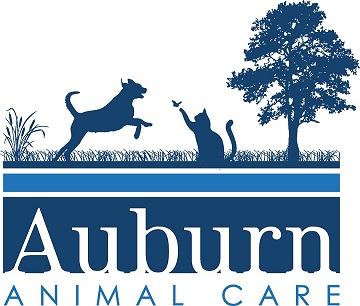Site Accessibility Features: Skip to page menus
Site Menus Section Skip to page content

Dogs normally have 42 adult teeth that should be fully erupted by seven months of age. If not, the missing teeth did not develop, have broken below the gum line, or remain unerupted . If a tooth is fractured, it can be a source of pain (often hidden well by your pup) and infection, and the remainder of the tooth needs to be removed to treat pain and potential infection. If the tooth is unerupted, it is at risk of forming a destructive dentigerous (odontogenic) cyst in the bone.
Unerupted teeth can occur for several reasons:
Although unerupted or broken teeth can be painful, dogs rarely show obvious signs of pain. Your veterinarian will need to take an intra-oral radiograph (X-ray) of the affected area(s) to determine if there is a tooth present, either in the form of broken roots or an unerupted tooth.
Like human intra-oral or dental radiographs, the film will be positioned inside your dog’s mouth. Your dog will be anesthetized for the procedure to prevent injury to your pet. Your veterinarian will discuss this with you in more detail before the procedure.
The most common unerupted teeth in dogs are the first premolars (the first tooth behind the canine), the canines (the fangs), and the third molars (the teeth at the very back of the mouth—like human wisdom teeth).
Brachycephalic (short-nosed) dogs, such as Boxers, Bulldogs, and Shih Tzus, and toy breeds (dogs under 11lb), like Chihuahuas and Yorkshire Terriers, are much more likely to have unerupted teeth and are at increased risk of dentigerous cysts. Boxers are also prone to having supernumerary teeth (more than 42); your veterinarian will check for unerupted teeth at the time of your dog’s spay/neuter procedure, which will help prevent dentigerous cysts from forming, regardless of the number of teeth in the mouth.
Extraction is recommended in most cases of unerupted teeth because of the risk of a destructive dentigerous cyst. If detected early enough, your veterinarian may remove the gingiva (operculectomy), making it easier for the tooth to erupt. This tooth must then be monitored closely for normal eruption. Your veterinarian will recommend the best treatment for your dog. This may include a referral to a veterinary dental specialist, especially if the location or position of the tooth compromises the ability to extract it entirely. Extracting unerupted teeth is the only way to prevent dentigerous cysts.
>"Extraction is recommended in most cases of unerupted teeth..."
It is difficult to predict what will happen to an unerupted tooth. In some cases, no disease will develop; however, if there are several unerupted teeth, they will develop destructive dentigerous cysts. This happens when the outer developmental coating or follicle of the unerupted tooth becomes cystic, forming fluid-filled sacs that put constant pressure on surrounding bone, ultimately causing bone destruction. These cysts can grow large before they are detected visually, affecting the roots of the surrounding teeth and the integrity of the jawbone. Unfortunately, some cysts may not be detected until after the jaw has fractured.
Dentigerous cysts and the original tooth must be removed carefully to avoid compromising the bone, which can easily fracture during the extraction. Every bit of cyst tissue must be removed, or the cyst can continue to expand. This often requires the removal of any other teeth affected by the cyst. These are often referred to veterinary dental specialists for the best outcome.
Dentigerous cysts are preventable if unerupted teeth are addressed early in life.
© Copyright 2025 LifeLearn Inc. Used and/or modified with permission under license. This content written by LifeLearn Animal Health (LifeLearn Inc.) is licensed to this practice for the personal use of our clients. Any copying, printing or further distribution is prohibited without the express written consent of LifeLearn. This content does not contain all available information for any referenced medications and has not been reviewed by the FDA Center for Veterinary Medicine, or Health Canada Veterinary Drugs Directorate. This content may help answer commonly asked questions, but is not a substitute for medical advice, or a proper consultation and/or clinical examination of your pet by a veterinarian. Please contact your veterinarian if you have any questions or concerns about your pet’s health. Created on Jan 9, 2023.
Site Sidebar: Skip to end of sidebar
Search Articles
Filter By Species
View All
Connect with us and one of our team members will be happy to assist you.
Phone: 440-543-1311 Fax: 440-973-9101 Email: info@auburnveterinaryhospital.com
Email UsRequest An Appointment10323 East Washington Street Chagrin Falls, Ohio, 44023
Monday: 8 am – 6 pm Tuesday: 8 am – 6 pm Wed: 8 am – 5 pm Thurs: 8 am – 6 pm Fri: 8 am – 5 pm Sat & Sun: Closed
Get DirectionsOur app features unique technology which allows you to access your pet’s medical records, book real time appointments, get Health Certificates, and much more.
© 2025 Veterinarians in Chagrin Falls | Auburn Animal Care. Provided by Covetrus | Powered by LifeLearn WebDVM